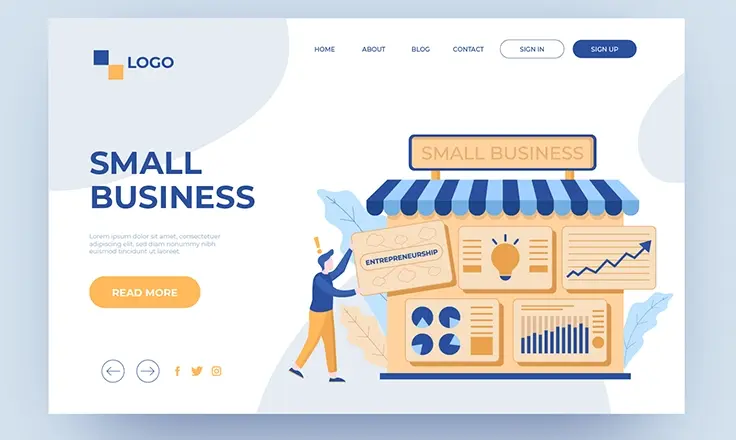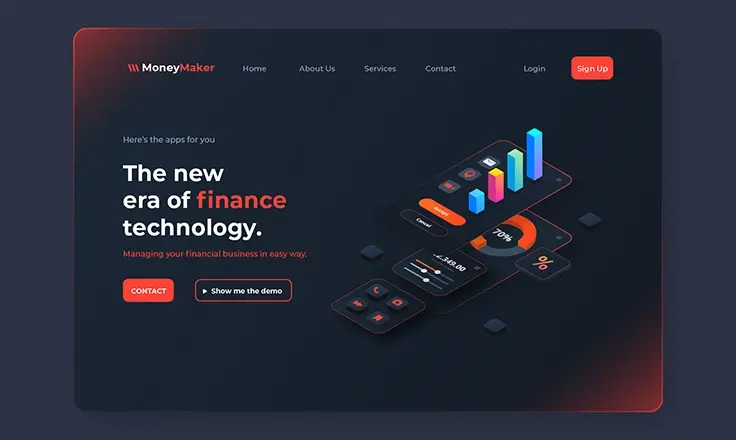Domain Name
A domain name is the address of your website on the internet. It is what people type in their browsers to access your site. For example, our domain name is adtechnologies.lk.
A domain name should be:
- Relevant: It should match your company name, brand name, or the purpose of your website.
- Memorable: Domain should be easy to remember and spell.
- Unique: With other existing websites or trademarks, Your Domain should not be confused.
You can register a domain name from various domain registrars, such as Domain.com, Godaddy, or Namecheap. The cost of a domain name varies depending on the extension (.com, .net, .org, etc.) and the availability. Generally, a domain name costs around $10/year and renews each year unless you decide to cancel.
Web Hosting
Web hosting is the service that provides space and resources for your website files and delivers them to the users when they request them. Without web hosting, your website will not be visible on the internet.
There are different types of web hosting services available, such as shared hosting, VPS hosting, dedicated hosting, cloud hosting, etc. Each type has its own advantages and disadvantages depending on your website needs and budget. Some of the factors that you should consider when choosing a web hosting service are:
- Performance: The speed and reliability of your website depend largely on the performance of your web host. You should look for a web host that offers fast loading times, high uptime, and adequate bandwidth and storage.
- Security: Your website should be protected from hackers, malware, spam, and other threats. You should look for a web host that offers SSL certificates, firewalls, backups, and other security features.
- Support: You should be able to contact your web host whenever you need help or encounter any issues with your website. You should look for a web host that offers 24/7 customer support via phone, email, chat, or ticket system.
Some of the popular web hosting providers are Bluehost, HostGator, SiteGround, etc. The cost of web hosting varies depending on the type and plan you choose. Generally, web hosting costs around $5/month for a basic plan.
Site Builder
A site builder is the tool that you use to create and design your website pages. It allows you to add content, images, videos, forms, buttons, and other elements to your website without coding.
There are different types of site builders available, such as WordPress, Wix, Squarespace, etc. Each type has its own features and functionalities depending on your website needs and preferences. You can refer our blog post about best free website builders for small business for more details. Some of the factors that you should consider when choosing a site builder are:
- Ease of use: You should be able to create and edit your website pages easily and intuitively. You should look for a site builder that offers drag-and-drop functionality, templates, plugins, widgets, and other tools that simplify the process.
- Customization: It is essential to have the ability to personalize your website pages to align with your brand identity and style. It’s recommended to seek a site builder that provides adaptable design options, color schemes, and font choices.
- Responsiveness: Ensuring that your website can seamlessly accommodate diverse screen sizes and devices is essential. Look for a site builder that incorporates responsive design features, enabling an optimal user experience across all platforms.
The cost of a site builder varies depending on the type and plan you choose. Some site builders are free to use but have limited features and functionalities. Others require a monthly or annual fee but offer more features and functionalities.
Content and Structure
Content and structure are the core components of your website. They determine what information you provide to your visitors and how you organize and present it.
Your content should be:
- Relevant: It should match the purpose and goals of your website and the needs and expectations of your visitors.
- Engaging: The website should be designed to captivate the attention and pique the interest of visitors, compelling them to take action.
- Informative: Content should provide clear and accurate information about your products or services, your company, your industry, and other topics that are related to your website.
- Original: Ensuring the website’s distinctiveness is vital, necessitating the avoidance of copying content from elsewhere. Vigilance against plagiarism and duplicate content is necessary to safeguard your reputation and maintain a favorable ranking.
Your structure should be:
- Logical: The website’s structure should follow a clear and consistent hierarchy that makes sense to your visitors and helps them navigate your website easily.
- Simple: Your website should maintain a concise and focused structure, encompassing only the essential and relevant pages and categories. Avoid overwhelming your visitors by refraining from excessive or irrelevant pages and categories that can cause confusion.
- User-friendly: It should have clear and descriptive labels, headings, menus, links, buttons, and other elements that guide your visitors through your website. You should avoid using jargon, acronyms, or ambiguous terms that can confuse your visitors.
Design and Functionality
Design and functionality are the aesthetic and technical aspects of your website. They determine how your website looks and works.
Your design should be:
- Attractive: Creating an appealing website design that aligns with your brand identity and style is paramount to captivating your visitors. Incorporate visually pleasing elements such as colors, fonts, images, videos, animations, and more to enhance the overall visual appeal.
- Consistent: Design should follow a uniform and coherent theme throughout your website. You should use the same colors, fonts, images, videos, animations, and other elements across all pages and categories of your website.
- Accessible: It should comply with the web design standards and best practices that ensure optimal user experience for all visitors. You should follow the Web Content Accessibility Guidelines (WCAG) that state that websites must be perceivable, operable, understandable, and robust.
Your functionality should be:
- Fast: Website’s functionalies should load quickly and smoothly without any delays or errors. You should optimize your website performance by reducing the size of your files, using caching, compression, minification, and other techniques that improve the loading speed of your website.
- Reliable: The website should operate flawlessly and maintain consistent performance, free from any bugs or glitches. It is imperative to conduct thorough testing of its functionality across various browsers, devices, screen sizes, and internet connections to ensure a seamless user experience.
- Interactive: Providing multiple means for visitor engagement is crucial. Enhance your website with features such as forms, buttons, sliders, pop-ups, chatbots, social media icons, and other interactive elements that facilitate communication and enable visitors to undertake specific actions while browsing your site.
Conclusion
These are some of the basic requirements of a website that you should consider before launching your online presence. By following these guidelines, you can create a website that meets the needs and expectations of your visitors and the standards of the web industry.




